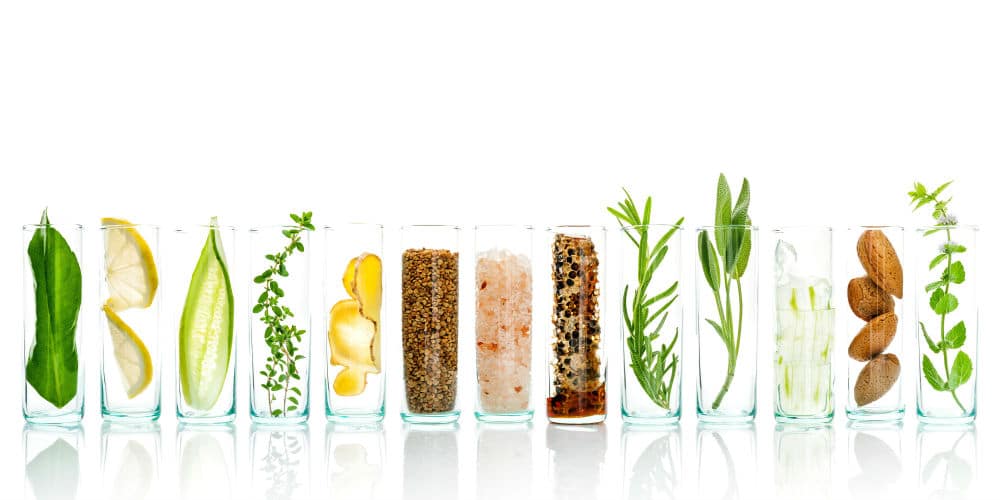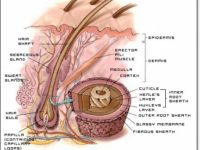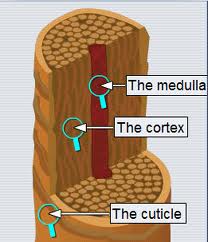Understanding the terms of the anatomy of the hair allows easier access and knowledge of information in your search during information gathering.
Follicle - The follicle is a stocking-like structure that contains several layers with different jobs. At the base of the follicle is a projection formed like sticking a finger in the bottom of a stocking and pushing it in a small amount. This projection is called a papilla and it contains capillaries, or tiny blood vessels, that feed the cells. The living part of the hair is bottom part of the stocking surrounding the papilla called the bulb. This bottom part is the only part fed by the capillaries. The cells in the bulb divide every 23 to 72 hours, faster than any other cells in the body.
The follicle is surrounded by two sheaths - an inner and outer sheath. These sheaths protect and mold the growing hair shaft. The inner sheath follows the hair shaft and ends below the opening of a sebaceous (oil) gland, and sometimes an apocrine (scent) gland. The outer sheath continues all the way up to the gland. A muscle called an erector pili muscle attaches below the gland to a fibrous layer around the outer sheath. When this muscle contracts, it causes the hair to stand up.
The sebaceous gland is important because it produces sebum which is a natural conditioner. More sebum is produced after puberty. The sebum production decreases in women throughout their lives. The production also decreases in men, but not as much as in women.
Shaft - The hair shaft is made up of dead, hard protein called keratin in three layers. The inner layer is called the medulla and may not be present. The next layer is the cortex and the outer layer is the cuticle. The cortex makes up the majority of the hair shaft. The cuticle is formed by tightly packed scales in an overlapping structure similar to roof shingles. Most hair conditioning products attempt to affect the cuticle. There are pigment cells that are distributed throughout the cortex and medulla giving the hair it's characteristic color.
The bulb is the deep, bulbous portion of the follicle that surrounds the dermal papilla. The bulb contains the matrix cells, the living, actively proliferating group of cells, which differentiate and become keratinized to form the hair cortex. This rate of proliferation is one of the highest of any tissue in the body. As they grow and develop, these cells steadily push the previously formed cells upwards. When the cells reach the upper part of the bulb they begin to change and arrange themselves into six cylindrical layers, one inside the other. The inner three layers of cells become the actual hair. The outer three layers become the lining of the hair follicle - the inner root sheath. The cells of the future hair shaft are positioned at the apex of the dermal papilla and will form the medulla (in terminal hairs), cortex and hair shaft cuticle.
It is the dermal papilla, which directs and dictates the embryonic generation of a hair follicle. The Dermal papilla presents as a healthy "pear" shape in normal hair follicles, and consists of a highly active group of cells shown to be capable of inducing follicle development from the epidermis. It is comprised of spindle-shaped cells with cytoplasmic processes called fibroblasts, collagen bundles, stroma, nerve fibers and a single capillary loop. It is continuous with the perifollicular sheath (dermal sheath) of connective tissue, which envelops the lower follicle.









